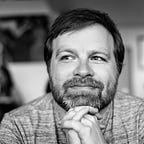“The hotel activity, proximity to highrise apartments and townhouses, as well as the Embarcadero Center shops, restaurants, theaters, and art exhibits will make the entire area a busy, active place both day and night, rather than an office district lying deserted once workers go home.” — promotional brochure, February 1967
Artificial, pt. 3
It’s possible for even the most hated of urban eyesores to have a vantage point that makes it look awesome, attractive, worthwhile.
For Embarcadero Center there exists not so much a vantage point, as a vantage time. Visit it on a cloudless weekend afternoon, and only then this entire “city within the city,” utterly devoid of people, exhibits something approaching beauty. Only then one can almost understand why some were once enamored with this complex copied and pasted from a videogame into real life; almost appreciate its stark geometry, shadowplay, inhumane scale and materials; almost enjoy being lost in its maze of alien, cross-linked surfaces.
Almost.
I’ve taken my camera to the Rockefeller Center West — as it was once meant to be called — many times throughout the years, and of the thousands of photos I took, here are but a few.
The main four towers were built in between 1971 and 1982 and designed by John C. Portman — his second urban complex after Atlanta’s Peachtree Center. The irregular floor plan allowed for “10 to 14 corner offices per floor, instead of the usual four.”
The towers were erected while the nearby Embarcadero Freeway was still operational. At least one critic hoped the Center would “reduce [the Freeway] to a secondary visual incident in which the flow of more or less distant traffic will be a continuous kinetic fascination.”
“The plan offers a profusion of facilities and pastimes for a person who can go about on foot (a level or two above all car traffic) and still not feel oppressed by big things around him,” wrote San Francisco Examiner in 1967.
The original plans promised “three theaters, one of 2,000 seats which will compete with New York’s Broadway for first showing rights to the nation’s top shows.” The venues never materialized; in their place now stands The Tulip, a concrete art structure/staircase.
“Properly executed, the high-rises can help save San Francisco from premature death” wrote one promotional piece during the 1970s. “The Center’s handsome immediate neighbor to the north is the Golden Gateway Center, to which it will be linked through careful architectural planning to complement that Center, yet with each complex retaining its own identity.”
“The Center is big. The trees are human. The project is good.”—opined San Francisco Examiner in 1967 of the biggest real-estate development in San Francisco to date. “[It dwarfs] both in size and scope almost anything conceived since the West was won.”
The hopes were as high as the planned towers. “[Embarcadero Center] will perhaps bring more change than San Francisco has undergone since the Gold Rush.”
Publicly available sky deck opened in 1996, but shut down before the end of the millennium owing to poor attendance. “Many tourists pointed out that the view of San Francisco is better from Twin Peaks, Telegraph Hill or the Golden Gate Bridge, and the price at those places is zero,” wrote SFGate.
Embarcadero Center was dedicated in May of 1982. Thirty years later, John King wrote for SFGate: “What once was likened to computer punch cards now stands as just another part of the landscape, a blunt cliff when viewed from north or south, spiked outcrops from east or west.”
Then he finished his essay with “And from any angle, it demonstrates how quickly ‘the future’ can seem quaint.”
This piece originally appeared in SPUR Magazine, Issue 535, in July 2014.
